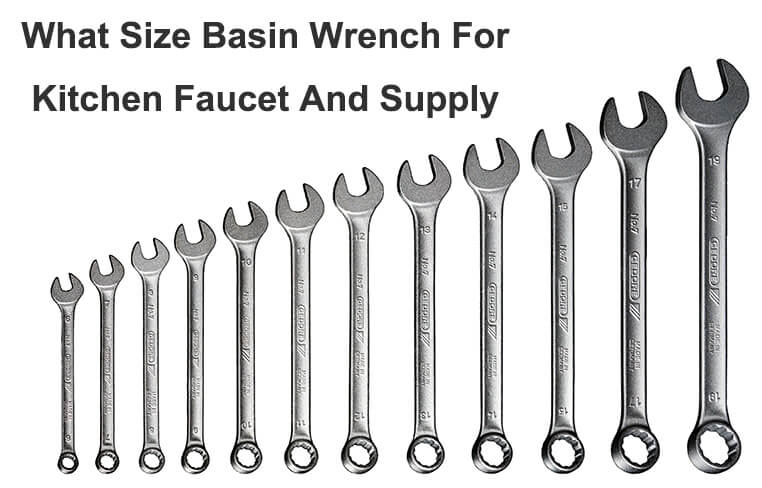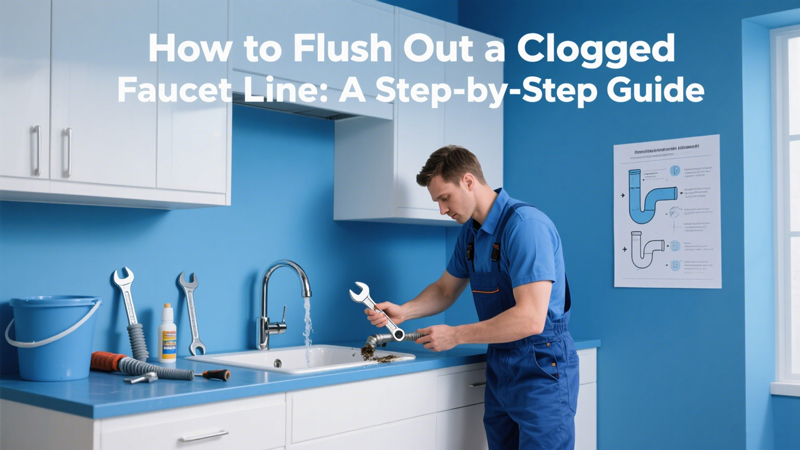
When it comes to plumbing repairs or installations, having the right tools is crucial. Among the many tools you may need, a wrench is an essential item. But when you’re dealing with a kitchen faucet and its supply line, you might be wondering what size basin wrench you should use. In this article, we’ll provide a comprehensive guide to help you determine what size basin wrench for kitchen faucet and supply line needs.
Understanding Faucet and Supply Line Connections
Before we delve into the wrench sizes, let’s take a moment to understand the different types of connections you might encounter with your kitchen faucet and supply lines.
Faucet Connections:
a) Compression Fittings: These connections typically require a basin wrench to tighten or loosen the nut that secures the faucet to the countertop or sink.
b) Threaded Connections: Some faucets have threaded connections that require a basin wrench to tighten or remove them.
Supply Line Connections:
a) Compression Fittings: Similar to faucet connections, supply lines often use compression fittings that require a wrench to tighten or loosen the nuts.
b) Threaded Connections: In some cases, supply lines may have threaded connections, which also necessitate a basin wrench for installation or removal.
What Size Basin Wrench For Kitchen Faucet And Supply Line
Now that we have an understanding of the different connections involved, let’s discuss how to determine the right basin wrench size for your kitchen faucet and supply line.
Compression Fittings:
When dealing with compression fittings, you’ll need an adjustable basin wrench. These wrenches have an adjustable jaw, allowing you to accommodate different sizes of nuts and bolts. To determine the right size for your compression fittings, follow these steps:
a) Measure the width across the flat sides of the nut. This measurement is known as the “across-the-flats” measurement.
b) Once you have the across-the-flats measurement, you can select an adjustable basin wrench that matches or is slightly larger than the measured size. For example, if the nut measures ½ inch across the flats, you would need a wrench that can accommodate at least a ½-inch nut.
Threaded Connections:
Threaded connections typically require a specific size of wrench, known as a basin wrench or a plumber’s wrench. These wrenches have long handles and adjustable jaws with a pivoting head, allowing you to reach and grip nuts in tight spaces. To determine the right size for your threaded connections, follow these steps:
a) Measure the diameter of the threaded connection. You can use a caliper or a tape measure to measure the outside diameter of the nut or the threaded section.
b) Once you have the diameter measurement, refer to a basin wrench size chart or consult the manufacturer’s instructions to determine the appropriate wrench size.
It’s worth noting that kitchen faucets and supply lines can vary in size, so there isn’t a one-size-fits-all answer. Therefore, it’s essential to measure the specific connections you’re working with to ensure you have the right wrench size.
Tips for Successful Faucet and Supply Line Work
Now that you know how to determine the right basin wrench size, here are a few additional tips to help you successfully work on your kitchen faucet and supply lines:
- Turn off the water: Before you begin any repairs or installations, always turn off the water supply to avoid leaks or accidents.
- Use Teflon tape: When connecting threaded connections, applying Teflon tape to the threads can help create a watertight seal and prevent leaks.
- Avoid overtightening: While it’s crucial to ensure connections are secure, overtightening can damage the fittings or cause leaks. Tighten the connections until they are snug but avoid excessive force.
- Seek professional help if needed: If you’re uncomfortable or unsure about performing any plumbing work, it’s best to seek the assistance of a professional plumber. They have the expertise and tools to handle the job safely and effectively.
Conclusion
In conclusion, when working on your kitchen faucet and supply lines, having the right basin wrench size is essential. Whether you’re dealing with compression fittings or threaded connections, measuring the appropriate dimensions and selecting the correct basin wrench size will ensure a successful repair or installation. Remember to follow safety guidelines and, when in doubt, consult a professional. With the right tools and knowledge, you can tackle your kitchen plumbing projects with confidence.
 WOWOW Faucets
WOWOW Faucets



